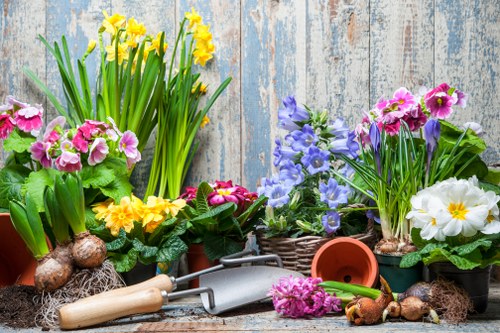Gardeners Honor Oak: A Tribute to Nature's Majestic Sentinel

Gardeners have long held the oak tree in high esteem, recognizing its enduring strength and beauty. The Gardeners Honor Oak is not just a tree; it's a symbol of resilience and natural elegance that has inspired countless individuals to cultivate their own green spaces.
Throughout history, oaks have been revered in various cultures for their towering presence and longevity. In gardens, they provide both shade and a habitat for a variety of flora and fauna, making them a cornerstone of any thriving ecosystem.
The significance of the oak in gardening extends beyond its physical attributes. It represents the deep-rooted connection between humans and nature, reminding us of the importance of preserving our natural heritage for future generations.

The History of Oaks in Gardening
Oaks have been a staple in gardens for centuries, often featured in the grand estates of nobility and the humble homesteads of common folk alike. Their robust nature makes them an ideal choice for various landscaping projects, from creating majestic gateways to serving as the centerpiece of a sprawling garden.
In many cultures, the oak is seen as a guardian tree, offering protection and stability. This cultural significance has only deepened gardeners' appreciation for oaks, leading to their widespread cultivation and reverence.
Moreover, the oak's ability to adapt to different climates and soil types has ensured its place in gardens around the world. Whether in temperate regions or more challenging environments, oaks continue to thrive, showcasing their unparalleled versatility.

Choosing the Right Oak for Your Garden
When selecting an oak for your garden, it's essential to consider factors such as climate, soil conditions, and the tree's mature size. Different oak species offer varying benefits, so understanding the specific needs of your garden will help you make an informed decision.
For instance, the White Oak is known for its graceful, rounded canopy and is well-suited to temperate climates. On the other hand, the Red Oak boasts vibrant fall foliage, adding a splash of color to your garden during the autumn months.
Additionally, consider the oak's growth rate and potential impact on surrounding structures. Proper planning ensures that your oak will grow harmoniously within your garden space, providing beauty without inconvenience.

Planting and Caring for Your Oak
Planting an oak requires careful preparation to ensure its healthy growth. Start by selecting a site that offers ample space for the tree's expansive root system and canopy. Proper soil preparation, including the addition of organic matter, can significantly enhance the oak's growth.
Regular maintenance, such as watering during dry spells and pruning to remove dead or diseased branches, is crucial for the oak's longevity. Additionally, mulching around the base of the tree helps retain moisture and suppresses weed growth.
Fertilizing should be done sparingly, as oaks generally thrive in nutrient-rich soil without excessive supplementation. Monitoring for pests and diseases will also help maintain the tree's health and prevent potential issues from escalating.

The Ecological Benefits of Oaks
Oaks play a vital role in supporting local ecosystems. Their acorns are a valuable food source for a variety of wildlife, including birds, squirrels, and deer. Additionally, oak trees provide shelter and nesting sites for numerous species, contributing to biodiversity.
The dense canopy of an oak helps regulate temperature and humidity levels in the garden, creating a more comfortable environment for both plants and living creatures. This microclimate can enhance the growth of underplantings and support a thriving garden ecosystem.
Moreover, oak trees contribute to air quality by absorbing carbon dioxide and releasing oxygen, making them an essential component of sustainable gardening practices.

Celebrating the Oak in Garden Design
Incorporating an oak into your garden design can elevate the overall aesthetic, providing a sense of grandeur and timelessness. The tree's imposing presence serves as a natural focal point, anchoring the garden layout and guiding visitors through the space.
Pairing oaks with complementary plants, such as flowering shrubs or native wildflowers, can create a harmonious balance between structure and color. Additionally, integrating pathways or seating areas beneath the oak invites contemplation and appreciation of the tree's magnificence.
The versatility of oaks allows them to blend seamlessly with various garden styles, from formal European gardens to more relaxed, cottage-inspired landscapes.

Seasonal Changes and the Oak's Beauty
One of the most captivating aspects of oak trees is their seasonal transformation. In spring, oaks burst into a canopy of fresh green leaves, signaling the renewal of life in the garden. Summer provides ample shade, making the oak a perfect retreat during hot days.
As autumn approaches, oaks showcase a spectacular display of color, with leaves turning shades of red, orange, and yellow. This seasonal shift adds dynamic visual interest and highlights the tree's natural splendor.
Even in winter, the bare branches of an oak hold a stark beauty, offering a different kind of elegance that underscores the tree's resilience and enduring presence.

Community and Cultural Significance
Oaks often serve as community landmarks, providing a shared point of reference and a sense of place. In many towns and villages, a prominent oak in a public garden or park becomes a gathering spot, fostering social connections and communal activities.
Festivals and events centered around oak trees celebrate their importance and educate the public about their ecological and cultural value. Such initiatives promote environmental stewardship and encourage the preservation of these magnificent trees.
Culturally, oaks feature prominently in literature, folklore, and art, symbolizing strength, wisdom, and longevity. This deep-rooted symbolism enhances the oak's role in garden design, making it a meaningful addition to any outdoor space.

Preserving the Oak for Future Generations
Ensuring the longevity of oak trees requires proactive measures to protect them from environmental stresses and human-induced challenges. Sustainable gardening practices, such as responsible watering and minimal soil disturbance, contribute to the oak's health and stability.
Engaging the community in conservation efforts can amplify the impact, fostering a collective responsibility towards maintaining these natural treasures. Educational programs and volunteer initiatives can raise awareness and encourage active participation in oak preservation.
By prioritizing the care and protection of oaks, gardeners honor not only the trees themselves but also the broader ecosystem they support, securing their legacy for future generations to admire and enjoy.

Conclusion: The Enduring Legacy of the Oak
The Gardeners Honor Oak embodies the perfect blend of beauty, strength, and ecological significance. Its majestic presence elevates any garden, offering both aesthetic appeal and practical benefits that enhance the overall environment.
By embracing the oak in their gardening practices, enthusiasts pay homage to a tree that has stood the test of time, symbolizing a harmonious relationship between humans and nature. This enduring legacy inspires continual appreciation and commitment to preserving the natural world.
As we look to the future, the oak remains a steadfast reminder of the importance of nurturing and safeguarding our natural landscapes, ensuring that their splendor endures for generations to come.



